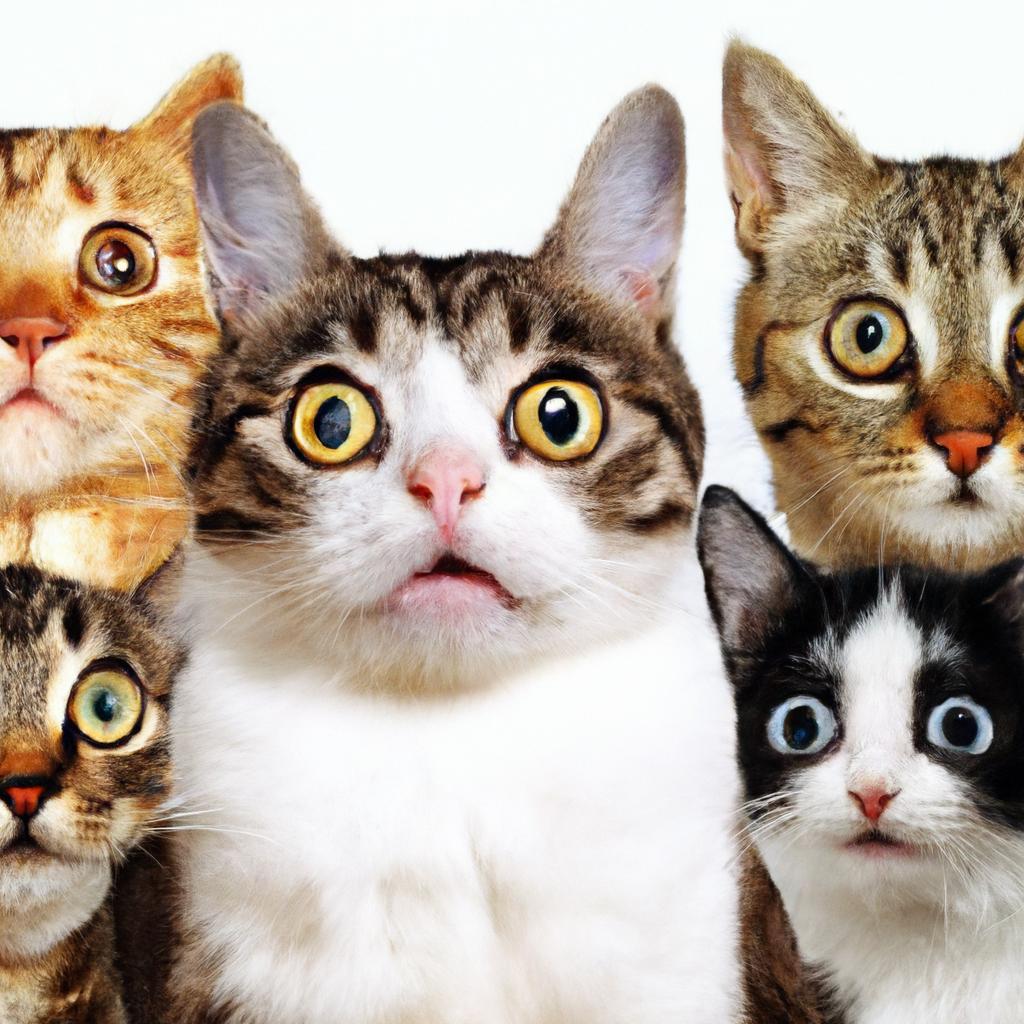In a cozy living room, a cat named Whiskers and a dog named Max faced off in a battle of wits. Whiskers, with his keen observational skills, stealthily opened a cabinet to snag a treat, showcasing his cunning intelligence. Meanwhile, Max, with his unwavering loyalty, fetched the newspaper on command, demonstrating his trainability. As the debate raged on, it became clear: intelligence manifests differently. Cats excel in problem-solving and independence, while dogs shine in social learning and obedience. Ultimately, the question remains—who is smarter? Perhaps it’s not about who is smarter, but how each uniquely enriches our lives.
Contents
- Understanding Canine Intelligence and Social Skills
- Exploring Feline Problem-Solving Abilities and Independence
- Comparative Analysis of Training Potential and Learning Styles
- Recommendations for Enhancing Cognitive Development in Pets
- Q&A
Understanding Canine Intelligence and Social Skills
When we delve into the realm of canine intelligence, it becomes evident that dogs possess a unique set of cognitive abilities that distinguish them from other animals, including cats. Their intelligence is not solely measured by their capacity to learn commands or tricks; it also encompasses their ability to understand human emotions and social cues. This emotional intelligence allows dogs to form deep bonds with their human companions, often responding to feelings of joy, sadness, or anxiety with remarkable sensitivity.
One of the most compelling aspects of canine intelligence is their social skills. Dogs are inherently pack animals, which means they thrive in social settings and have evolved to communicate effectively with both their peers and humans. Their ability to interpret body language, vocal tones, and facial expressions enables them to navigate complex social interactions. This skill set is not just beneficial for their relationships with humans; it also plays a crucial role in their interactions with other dogs, fostering cooperation and social harmony.
Moreover, the training potential of dogs showcases their intelligence in a practical context. Dogs can learn a variety of commands and tasks, from basic obedience to advanced service roles. This adaptability is a testament to their cognitive flexibility and willingness to engage with humans. Many breeds have been specifically developed for their intelligence and trainability, such as Border Collies and German Shepherds, who excel in obedience and problem-solving tasks. Their ability to learn and perform complex tasks further emphasizes their cognitive capabilities.
In addition to their impressive learning abilities, dogs exhibit a remarkable capacity for empathy. Research has shown that dogs can sense their owner’s emotional states and often respond in ways that provide comfort and support. This empathetic behavior not only strengthens the bond between dogs and humans but also highlights the depth of their social intelligence. By understanding and responding to human emotions, dogs demonstrate a level of intelligence that transcends mere instinct, making them not just companions but also invaluable partners in our lives.
Exploring Feline Problem-Solving Abilities and Independence
When it comes to problem-solving, cats exhibit a remarkable level of independence that sets them apart from their canine counterparts. Their ability to navigate complex environments and find solutions to challenges showcases a unique form of intelligence. Unlike dogs, who often rely on human guidance, cats tend to approach problems with a self-sufficient mindset, demonstrating their capacity for critical thinking and adaptability.
One of the most intriguing aspects of feline intelligence is their instinctual behavior. Cats are natural hunters, and their survival skills require them to think on their feet. They can assess situations quickly, whether it’s figuring out how to reach a high perch or devising a strategy to catch elusive prey. This innate problem-solving ability is not just about survival; it reflects a deeper cognitive process that allows them to learn from their experiences and adapt their strategies accordingly.
Moreover, cats often engage in play that mimics hunting scenarios, which serves as both entertainment and a training ground for their problem-solving skills. Through interactive play, they learn to manipulate objects, navigate obstacles, and develop their agility. This playful exploration is crucial for their mental stimulation and showcases their ability to think creatively. The independence they exhibit during these activities further emphasizes their self-reliance and cognitive prowess.
In addition to their hunting instincts, cats also demonstrate a keen understanding of their environment. They can remember the locations of food sources, identify safe pathways, and even manipulate their surroundings to achieve their goals. This level of spatial awareness and memory retention is indicative of a sophisticated intelligence that rivals that of dogs. As we delve deeper into the world of feline cognition, it becomes increasingly clear that cats possess a unique blend of problem-solving abilities and independence that challenges traditional notions of intelligence in pets.
Comparative Analysis of Training Potential and Learning Styles
When it comes to understanding the training potential of cats and dogs, it’s essential to recognize the inherent differences in their learning styles. **Dogs** are often seen as more trainable due to their social nature and eagerness to please their human companions. This trait makes them more receptive to commands and structured training sessions. In contrast, **cats** tend to be more independent and less motivated by human approval, which can lead to a perception that they are less intelligent or harder to train. However, this independence can also be viewed as a form of intelligence, as cats often learn through observation and experimentation rather than direct instruction.
The methods of learning employed by these two species further highlight their distinct cognitive abilities. **Dogs** thrive in environments where they can engage in repetitive tasks and receive immediate rewards. Their ability to learn through positive reinforcement is well-documented, making them excellent candidates for obedience training and complex tasks. On the other hand, **cats** often prefer a more self-directed approach. They may not respond to commands in the same way, but they exhibit problem-solving skills and adaptability that can be equally impressive. For instance, a cat might figure out how to open a door or manipulate a puzzle feeder, showcasing their intelligence in a different light.
Moreover, the social dynamics of each species play a crucial role in their training potential. **Dogs**, being pack animals, are naturally inclined to follow a leader, which translates into their training. They often look to their owners for guidance and direction, making them more amenable to learning commands and tricks. In contrast, **cats** are solitary hunters by nature, which influences their learning style. They may choose to engage in training when it suits them, often leading to a more sporadic and less predictable learning process. This difference does not diminish their intelligence; rather, it reflects their unique evolutionary paths and survival strategies.
Ultimately, the reveals that both cats and dogs possess distinct forms of intelligence that cater to their respective lifestyles. While dogs may excel in obedience and structured training, cats demonstrate remarkable problem-solving abilities and independence. Understanding these differences not only enriches our appreciation for each species but also informs how we approach their training and interaction. Recognizing that intelligence manifests in various ways allows us to celebrate the unique qualities that both cats and dogs bring to our lives.
Recommendations for Enhancing Cognitive Development in Pets
Enhancing cognitive development in pets is essential for their overall well-being and can lead to a more fulfilling relationship between pets and their owners. Engaging your furry companions in mentally stimulating activities not only sharpens their intelligence but also helps alleviate behavioral issues. Here are some effective strategies to consider:
- Interactive Toys: Invest in puzzle toys that challenge your pet to think critically. These toys often require pets to solve problems to access treats, providing both mental stimulation and a reward for their efforts.
- Training Sessions: Regular training sessions can significantly boost your pet’s cognitive abilities. Teaching new commands or tricks not only reinforces good behavior but also keeps their minds sharp. Consider using positive reinforcement techniques to make learning enjoyable.
- Socialization Opportunities: Expose your pets to different environments, people, and other animals. This exposure helps them adapt to new situations and enhances their problem-solving skills, as they learn to navigate various social dynamics.
- Interactive Playtime: Engage in games that require your pet to think and strategize. Activities like hide-and-seek or fetch with a twist can stimulate their minds while also providing physical exercise.
Incorporating these activities into your pet’s routine can lead to significant improvements in their cognitive functions. Just like humans, pets thrive on mental challenges, and the more you engage their minds, the more they will flourish. Remember, a stimulated pet is a happy pet, and investing time in their cognitive development can yield long-lasting benefits.
Moreover, consider tailoring activities to your pet’s individual preferences and abilities. Some pets may excel in problem-solving tasks, while others might prefer social interactions or physical challenges. By observing their reactions and adjusting the activities accordingly, you can create a personalized cognitive development plan that suits their unique personality.
Lastly, don’t underestimate the power of routine. Establishing a consistent schedule for mental exercises can help reinforce learning and create a sense of security for your pet. As you incorporate these recommendations into your daily life, you’ll not only enhance your pet’s intelligence but also deepen the bond you share, making every moment spent together more enriching and enjoyable.
Q&A
-
Are cats or dogs more trainable?
Dogs are generally considered more trainable than cats due to their social nature and desire to please their owners. They respond well to commands and can learn a variety of tricks and tasks. In contrast, cats are more independent and may not respond to training in the same way, often choosing to follow their own instincts.
-
Which animal has better problem-solving skills?
While both cats and dogs exhibit problem-solving abilities, studies suggest that cats may have an edge in certain scenarios. Cats often demonstrate innovative thinking when faced with challenges, such as figuring out how to access food. However, dogs excel in social problem-solving, particularly in situations that involve teamwork with humans.
-
Do cats or dogs have better memory?
Dogs tend to have a better short-term memory, especially when it comes to remembering commands and routines. However, cats possess a remarkable long-term memory, allowing them to remember locations and experiences over time. This difference highlights the unique cognitive strengths of each species.
-
Is intelligence in pets solely based on breed?
No, intelligence in both cats and dogs is not solely determined by breed. Individual personality, environment, and upbringing play significant roles in shaping a pet’s intelligence. While certain breeds may exhibit specific traits, intelligence can vary widely among individual animals, regardless of their breed.
In the age-old debate of feline versus canine intelligence, it’s clear that both cats and dogs possess unique cognitive strengths. Ultimately, the smarter pet is the one that resonates with your lifestyle and companionship needs. Choose wisely!

大家好,我是彼得潘,專業的手法身體治療師。我喜歡探索和研究各種主題,並透過與人工智慧的合作分享專業、實用、有趣的文章。我們定期進行人工審核,以確保內容的準確性。如果您發現文章中有任何不準確的地方,請隨時與我們聯繫,我們會及時糾正。您可以透過 [email protected] 與我們聯繫。



